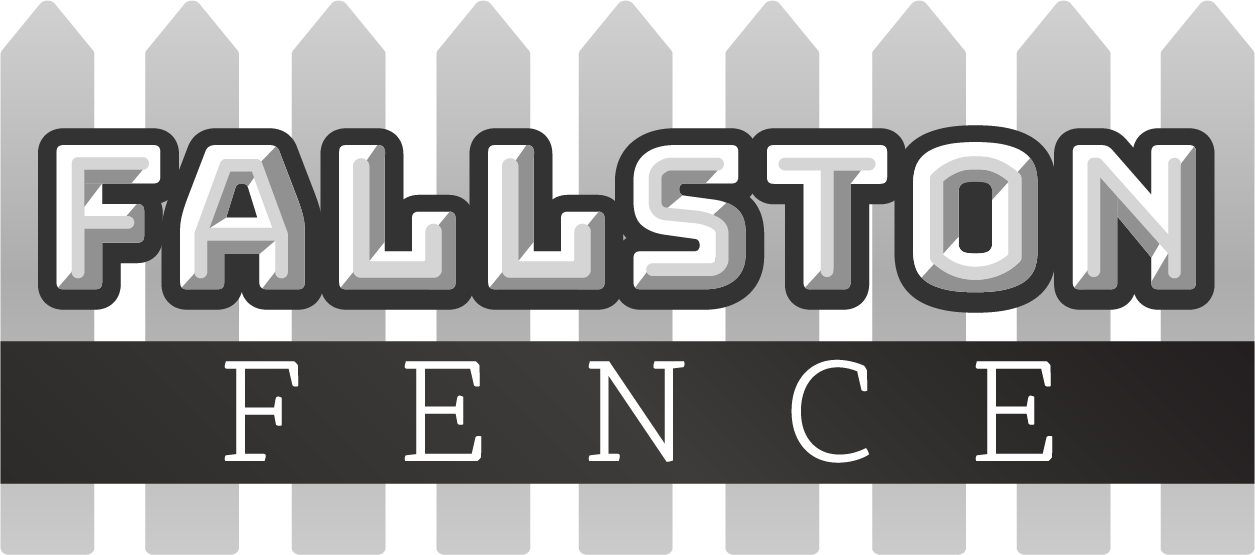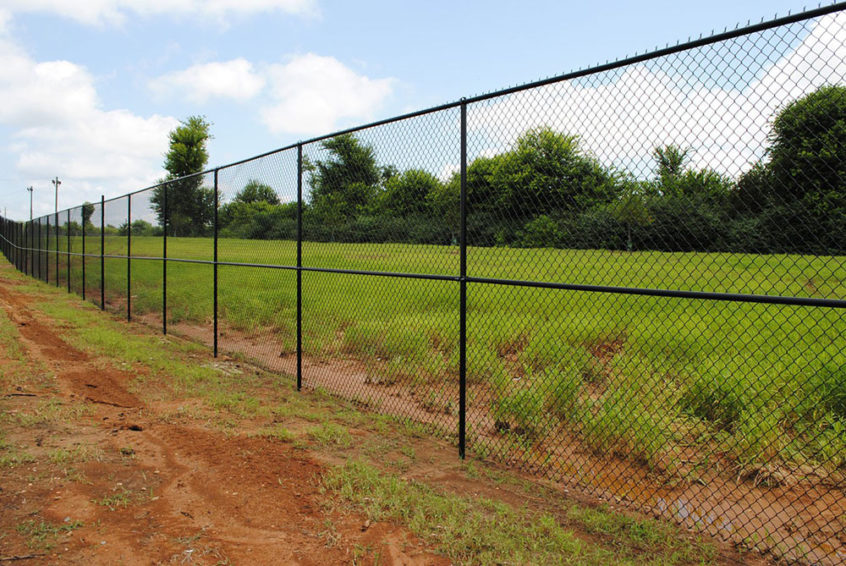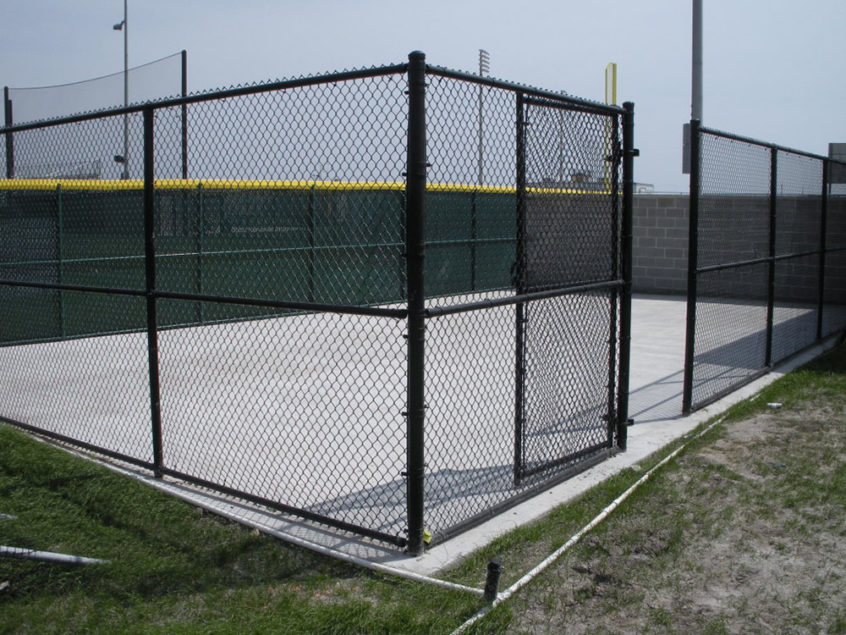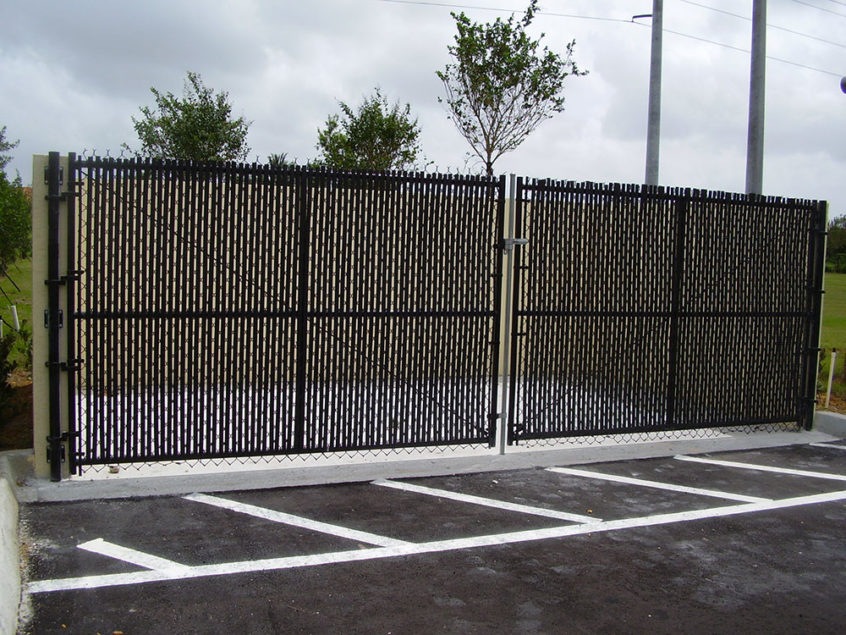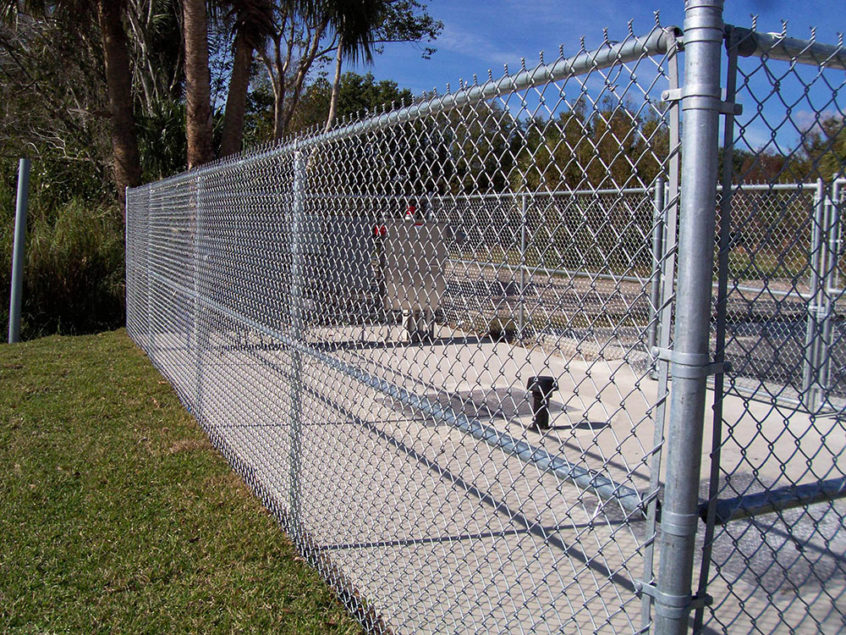Chain Link Fences
For a free chain link fence estimate or to discuss whether a chain link fence is right for you, contact Fallston Fence.
An Introduction to the Chain Link Fence
Once upon a time, fencing was used primarily to keep livestock animals from getting into a farmer's garden. Typically constructed from split rails, this fencing was notorious for letting frisky goats into the radish patch. In the late 19th century, metal mesh weaving came along offering farmers their first look at what was possible with security fences.
Today, chain link fences are made from galvanized, corrosion-resistant metal that is rust-proof, maintenance free and can be zinc-dipped for additional colors or protection against the harsh Maryland winters. Their mesh can also be woven with barbed wire or twisted ends to prevent animals (or people) from entering a property. Chain link fences come in a variety of heights, colors and mesh sizes to match every property type and security need. Fences shorter than six feet tall typically have knuckled wires at the top and bottom to limit exposure to potentially sharp ends.
Chain Link Fence Prices vs. Other Fence Types
In the full spectrum of fencing, chain link fences are among the most affordable option out there not just in the cost of installation but in maintenance opportunity cost. However, it comes with a trade-off. Wood fencing, the next least expensive option, offers more privacy for property owners, but also requires periodic painting, staining, repair, and treating to ward off the elements year after year. On the other hand, chain link fencing can remain safe, secure and corrosion free for more than 20 years without any significant investment in time or money. Is spending one weekend a year staining your fence worth the additional privacy it offers? That's entirely up to you.
Installing a Chain Link Fence
The first step to installing a chain link fence is to measure your property and match it up with the county assessor's map. Many a civil dispute has arisen over an improperly placed fence. Once you are assured that your fence is properly measured, it is time to place flag poles where your fence posts will sit. Before you dig, be sure to contact your local utility office who will flag any underground utilities you will want to avoid. Also, now is the time to check your local city or homeowners ordinances regarding fences. Most cities and counties do not require a permit for fences six feet tall or less. However, those that surround a pool or those that are over six feet tall must go through the permit process before you can begin construction.
Once your ducks are in a row, it is time to start installing your fence. You will want to dig holes where the fence posts will rest, place the zinc-coated pole in the hole and fill the base of it with cement. Once the cement has set and cured, you can begin tying the mesh to the end post, stretching it as you go, and tying it to the other end. Then, it is time to go back and secure the mesh to the pine posts with aluminum wire. You may also need to add top or bottom rails as a security measure to keep the mesh taut.
Curious if a chain link fence is right for you? Contact Fallston Fence for a free chain link fence estimate.
